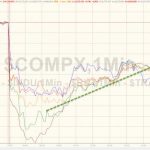The Energy Information Administration (EIA) on Aug 22, reported that U.S. crude inventories dropped by 5.8 million barrels for the week ending Aug 17. Following this, crude oil price rose to a two-week high to just over $74 a barrel. Moreover, crude-oil futures increased for the fifth consecutive session.
This rise was partially supported by an anticipation of a fall in oil exports from Iran due to new sanctions on the middle-eastern country by the United States. Under such circumstances, investing in energy mutual funds would provide value for money.
Oil Prices Rally
A wider-than-expected drop in U.S. crude inventories not only supported oil prices in America but also served to negate the global decline in oil prices due to escalating trade war tensions between the United States and China. West Texas Intermediate oil for October delivery rose 3.1% to $67.86 in its full session as a front-month contract. This was its highest level since Aug 7 and has increased for five straight sessions.
Notably, October Brent crude gained 3% to finish at $74.78 — its highest level since Jul 30. Also, gasoline stockpiles increased 1.2 million barrels last week. The EIA also reported that crude production in America increased to 11 million barrels a day last week. The figure is up almost 1.5 million barrels a day from last year.
What Supported Oil Prices?
Despite a huge increase in per day crude production, oil prices have rallied in the past few sessions. Such a rally stems primarily from anticipation that Iran would be forced to curtail its oil imports due to latest sanctions that the United States has imposed on the middle eastern country. Oil companies in Europe have already started cutting their purchases from Iran. Under such circumstances, global oil supplies might reduce by approximately 1.5 million barrels a day.
Also, pushing oil prices higher were comments from President Donald Trump regarding Fed Chief Jerome Powell’s stance on rate hikes. Trump openly criticized Powell’s approach, stating that he was “not thrilled” about it. This led to weakness in the greenback, which made oil even cheaper for buyers outside the United States.








Leave A Comment